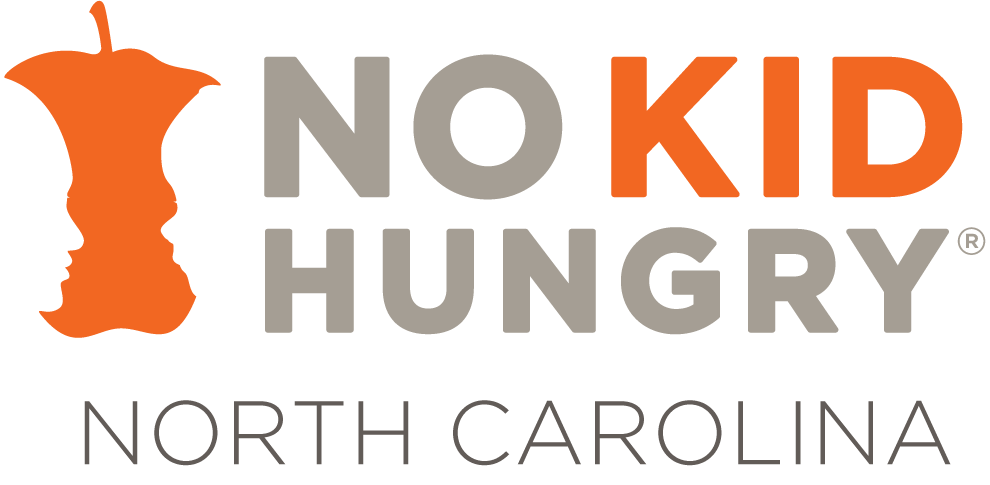
School Breakfast in North Carolina
More than a quarter million NC public school students who qualify for free and reduced-price meals eat school lunch, but not school breakfast — even though it is available to them, and they likely need it.
But that number is shrinking. Since No Kid Hungry NC started in 2011, the percentage of free and reduced price-eligible students eating school lunch who are also eating school breakfast has grown from about 40% to almost 60% — a powerful indicator that school breakfast is becoming more accessible for students.
No Kid Hungry NC’s school breakfast program success stories include the NC School Breakfast Challenge, and the 2018-19 Breakfast After the Bell Initiative grants with the Office of the Governor and other partners.
Innovative Breakfast After the Bell Methods
Many barriers stand between students and eating school breakfast, from transportation to cafeteria logistics to stigma. Innovative Breakfast After the Bell methods of serving school breakfast — including Breakfast in the Classroom, Grab and Go, and Second Chance Breakfast — can break down these barriers. No Kid Hungry NC is working with nutrition directors, principals, superintendents, and more to implement these creative, low-cost ways of increasing school breakfast participation across the state.
Breakfast After the Bell makes breakfast a part of the school day for all students, and is proven to raise participation levels on average to as high as 90 percent. And the more students who eat school breakfast, the more students getting the benefits of starting their day with a healthy meal: better academic performance, more days of school attended, fewer discipline issues, and fewer tardies.
These methods are designed to increase access to the School Breakfast Program, which is funded by the U.S. Department of Agriculture, and plays a crucial role in making sure kids get the food they need to focus and excel in the classroom.
What’s the Impact of School Breakfast?
Research shows that school breakfast is good for kids, classroom, and communities. Children who eat a good breakfast tend to perform between in school, have better attendance, and exhibit fewer behavior problems.
Here are five ways school breakfast benefits kids:
- Higher Test Scores: Hunger makes school harder. Students who eat school breakfast achieve higher scores on standardized tests.
- Calmer Classrooms: Children who do not regularly get enough nutritious food to eat tend to have significantly higher levels of behavioral, emotional and educational problems.
- Fewer Trips To The Nurse: When kids come to school hungry, they visit the school nurse more often due to stomachaches and headaches. Kids who struggle with hunger are also likely to be sick more often, slower to recover from illness, hospitalized more frequently and more susceptible to obesity.
- Stronger Attendance & Graduation Rates: Students who eat school breakfast attend more school days. Chronic absenteeism, defined as missing three weeks or more of school, decreases by 6 percentage points on average when students have access to Breakfast After the Bell. Attendance is important, as students who attend class more regularly are 20 percent more likely to graduate from high school.
- Maximizes Our Country’s Future: When children are hungry, they struggle to grow up into strong, healthy and productive members of our society. This comes at a massive cost to the American economy and its potential.
Every time we feed a child, we’re unlocking their ability to grow up to become the next future teachers, scientists and entrepreneurs. To learn more, the Study on Chronic Absenteeism and Breakfast After the Bell is new research that shows the impact serving breakfast as part of the school day has on student outcomes. In addition, the No Kid Hungry Starts with Breakfast report describes a social impact analysis that examines the impact school breakfast has on kids and classrooms.
Fast Facts
Pre-pandemic:
- Close to 60 percent (almost 900,000) of NC students in traditional public preK-12 schools are eligible for free or reduced-price school meals.
- Statewide, only 58 low-income children eat school breakfast for every 100 who eat school lunch.
- Growing participation from the current 58 percent to the 70 percent goal would mean more than $22 million annually in additional funding for our state.
- More than a fourth of NC schools are CEP, meaning the school is confirmed by the USDA to be area-eligible due to severe economic need under the federal Community Eligibility Provision so that all school meals can be served free.
- Effectively all (98.4 percent) of NC schools that operate the National School Lunch Program also operate the School Breakfast Program.
Since March 2020:
- With the return to in-person learning in a COVID-19 world, innovative methods of meal service have become more important than ever. Strategies that serve breakfast and other meals in the classroom allow schools to keep students in smaller, safer groups, instead of moving them all into the cafeteria at once. The community building benefits of Breakfast in the Classroom also contribute to the need for social-emotional learning and connection in the wake of the trauma of the pandemic.
Resources
- See the latest School Breakfast resources from the No Kid Hungry Center for Best Practices
- Click here to see the full collection of NC School Breakfast Resources
- Innovative Breakfast Delivery Options
- Breakfast After the Bell Equipment Tips
- Breakfast After the Bell Myths
- Educators’ FAQs about Breakfast after the Bell


